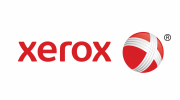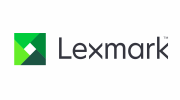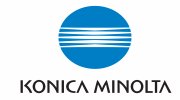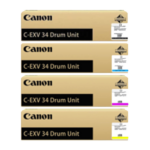For example, the cupcake shop may be able to predict the cost of sugar and other ingredients fairly regularly for months. And even if changes do happen, they are unlikely to affect the cupcake business’s financial bottom line. As the leading provider of construction budgeting software, Buildertrend is committed to helping you stay on top of your bottom line. Buildertrend’s financial tools offer intuitive solutions and integrations – like our QuickBooks integration – to help you work simpler, especially when working with complex accounting rules.
- These platforms provide a comprehensive suite of tools that support project planning, execution, and financial management, catering specifically to the needs of the construction industry.
- Retainage can be best explained as a safety net — a certain percentage of the contract’s total value (typically 5% to 10%) is held back until project completion or a pre-decided date.
- Although it is possible to combine these methods, the shortcomings of both in general and the use of averages in particular meant that a new approach was needed.
- Effective allocation of these costs helps ensure that each project bears its fair share of overhead expenses, contributing to a more accurate assessment of project profitability.
- Speaking of which, job costing concerns itself with 2 types of costs — direct and indirect costs.
Business Tax Deadlines: A Guide for 2025
Construction accounting refers to a specialized set of principles and practices tailored to meet the unique financial needs of construction projects. As contractors create, modify, or restore assets, they encounter specific challenges that demand a nuanced approach to financial management. While G&A costs are not directly tied to specific jobs, they must still be accounted for within the overall financial management of the business.
Job Costing in Construction Accounting
This is important because over or under-billing can greatly impact reported revenue, which will affect your numbers come tax time. If the quote is too low, it can lead to deficit projects and troublesome renegotiations with customers. If the quote is too high, your competitors may lose your order.Poor estimates can lead to revenue recognition https://www.bignewsnetwork.com/news/274923587/how-to-use-construction-bookkeeping-practices-to-achieve-business-growth issues for companies using the completion rate method.
- This type of contract is particularly beneficial in projects where the scope is not well-defined at the outset, allowing for adjustments as the project progresses.
- Plus, an advantage of this method is that contractors can defer taxable revenue to the following year if the project won’t be completed in the current tax year.
- On top of that, construction contracts often include retainage — a portion of the payment that is withheld until the entire project is complete.
- One key practice is maintaining detailed records of all financial transactions, which supports accurate financial statements and provides evidence for disputes or audits.
- Also called fixed-price contracts, where the parties agree on a fixed price for all the materials and labor for an entire project or phase.
Job Costing and Budgeting with QuickBooks Online
Retainage tracking is substantial in construction accounting construction bookkeeping due to the tight profit margins in the industry. GAAP provides best practice accounting standards for all industries in the United States. It also helps contractors decide whether to recognize book revenue at a particular time (such as CCM) or over some time (such as PCM). Efficient construction accounting and accurate bookkeeping are essential parameters in the construction industry.
In construction contracts, effective financial management is not merely necessary; it is the cornerstone of project success and business sustainability. As we’ve explored the diverse facets of construction accounting, from understanding contract types to recognizing revenue and costs, it becomes evident that a nuanced approach is essential. A WIP report provides an overview of all open projects’ status at a specific point in time, consolidating information on project revenue, costs incurred, billings, and progress. It combines all job costing data in one place, offering an accurate representation of each job’s current status and your business’s overall financial health. As a contractor is a project-based business, analyzing and marking the cost of each project is the key to bringing out better revenue and profitability. Appropriate and consistent job costing helps companies accurately estimate projects and keep a stringent track of actual and estimated costs.
- Ideally, each of your financial accounting processes should work together seamlessly as a part of a larger system.
- Different from the completed contract approach, the percentage of completion method allows revenue to be recognized periodically over the lifespan of a project.
- For example, let’s say a $350,000 project contract calls for 10 payments throughout the timeline.
- Retainage occurs in construction when a portion of a payment is held back – or retained – from a payment until the project is complete.
- However, you can take a “completed contract” approach as well, which involves calculating taxes owed on each contract.
- These factors make construction accounting a more focused discipline that draws on the same basic principles as general accounting but with distinct features that impact project management.
Thanks to a tightly-knit project timeline, milestone payments help companies stay financially afloat. In the last part of our guide on accounting for construction companies, we will use everything learned so far to gear you with 12 foolproof tips to protect the bottom line of your business. Often called pay application or pay apps, the payment application report is a series of documents that contractors exchange with one another during payment. At any rate, the accounts receivable aging report grants this helpful overview to the construction business.
- The same applies to labor cost determination, real-time financial tracking, and the implementation of powerful construction accounting software to help meet tax requirements.
- At any rate, all this information proves that construction contracts have long production cycles that often last for longer than a year.
- Appropriate and consistent job costing helps companies accurately estimate projects and keep a stringent track of actual and estimated costs.
- “Fluctuation Provisions“ adjust the total project cost based on changing prices for labor, materials, and other expenses throughout the project.
- The ASC 606 impacts revenue recognition in the construction industry by requiring contractors to reconsider how and when they recognize revenue.
This gives you a quick, easy and accurate look at your gross profit at any given time. A construction accounting system is a specialized financial management framework designed to address the unique challenges and requirements of the construction industry. It involves tracking and reporting project-specific financials, including revenue recognition, cost management, and compliance with industry standards.






















